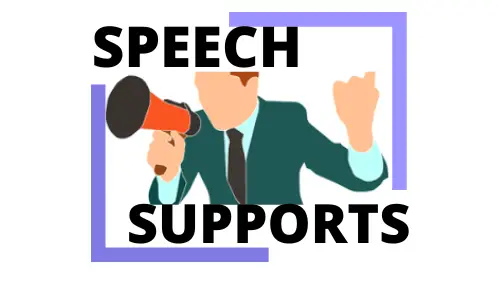The ability to captivate your audience in an essay from the very first sentence is a skill that can elevate your work from mundane to memorable. At the heart of this art lies the “hook,” a strategically crafted opening that entices readers and draws them into the narrative.
Understanding how to write a hook for an essay is akin to unlocking the gateway to engaging and impactful writing. As we embark on this article, we will unravel the intricacies of crafting hooks that not only grab attention but also set the stage for a compelling journey through the realms of your essay.
Let’s delve into the nuances of this essential writing technique and discover the secrets to making your introduction an irresistible invitation for your readers.
What’s the main purpose of an essay hook?

The main purpose of an essay hook is to grab the reader’s attention and engage them from the very beginning of the essay. A hook is the opening sentence or sentences of an essay that are designed to draw the reader in and make them want to read more. It serves as a way to pique the reader’s interest, set the tone for the essay, and create a sense of anticipation.
A well-crafted essay hook can take various forms, such as a surprising fact or statistic, a thought-provoking question, a powerful quote, a vivid description, or an anecdote. The idea is to present something compelling and intriguing that entices the reader to continue reading.
By capturing the reader’s attention with an effective hook, the writer increases the likelihood that the audience will stay engaged with the essay and be motivated to explore the ideas and arguments presented in the following paragraphs.
In essence, the essay hook is a tool that writers use to make their work more interesting, compelling, and memorable right from the start, setting the stage for a successful and impactful essay.
How can anecdotes effectively capture attention in an essay?
Crafting an engaging essay involves more than just presenting facts and arguments; it requires the artful use of language and storytelling. Anecdotes, when employed effectively, can be powerful tools to capture and maintain your reader’s attention. Drawing from my experience as a seasoned writer, here are some strategies for using anecdotes in your essay:
- Relevance is Key: Begin by selecting anecdotes that directly relate to your essay’s theme or topic. Irrelevant anecdotes may confuse readers or divert their attention. A well-chosen story should seamlessly integrate with the overall message you want to convey.
- Create Vivid Imagery: The strength of an anecdote lies in its ability to paint a vivid picture in the reader’s mind. Use descriptive language to evoke emotions and sensations, allowing your audience to immerse themselves in the narrative. Make them feel as if they are experiencing the story alongside the characters.
- Connect on a Personal Level: Anecdotes have the power to humanize your writing. Share personal experiences or use relatable scenarios that your audience can identify with. When readers can connect emotionally to your narrative, they are more likely to stay engaged and invested in your essay.
- Establish a Strong Opening: Place your anecdote strategically at the beginning of your essay to grab your reader’s attention from the outset. A compelling opening story sets the tone for the entire piece and entices readers to continue exploring your arguments.
- Highlight a Central Theme: Ensure that your anecdote aligns with the central theme or message you wish to convey in your essay. It should serve as a microcosm of the broader ideas you will discuss, providing a tangible example that anchors your reader’s understanding.
- Maintain Conciseness: While anecdotes are valuable, it’s essential to strike a balance. Avoid excessive details that may divert from your main point. Keep your storytelling concise, focusing on the most crucial elements that support your essay’s purpose.
- Transition Seamlessly: After presenting your anecdote, smoothly transition into the main body of your essay. Clearly articulate how the story ties into the larger context of your topic, ensuring a seamless flow between the narrative and your analytical content.
- Leave a Lasting Impression: Conclude your essay by referring back to the anecdote, demonstrating its relevance to your overall message. This creates a satisfying narrative loop for your readers, leaving them with a memorable and impactful conclusion.
Remember, anecdotes are not just embellishments; they are strategic tools that, when wielded skillfully, can elevate your writing and captivate your audience’s attention.
In what ways do questions engage readers as hooks?

Using questions as hooks is a compelling technique to engage readers right from the beginning of your piece. When crafted effectively, questions can pique curiosity, stimulate critical thinking, and create a sense of involvement.
Drawing upon my experience, here are several ways questions can serve as effective hooks:
- Curiosity Spark: Pose a thought-provoking question that taps into the natural curiosity of your readers. A question that challenges their current understanding or prompts them to consider a new perspective can instantly draw them into your writing.
- Personal Connection: Ask a question that resonates with the experiences or concerns of your target audience. When readers feel a personal connection to the question, they are more likely to be emotionally invested in finding the answer, making them eager to read on.
- Rhetorical Impact: Craft rhetorical questions that don’t necessarily demand a direct answer but serve to make a powerful statement. This technique can be particularly effective in creating a sense of drama or emphasizing a key point in your introduction.
- Problem-Solving Appeal: Frame your question in a way that suggests a problem or challenge, and hint at the possibility of finding a solution within your essay. This sets up an implicit promise to your readers that they will gain valuable insights or knowledge by reading further.
- Establishing Relevance: Ensure that your question is directly related to the topic of your essay. By establishing relevance early on, you demonstrate to your readers that your writing is worth their time and addresses something meaningful to them.
- Open-Ended Intrigue: Craft open-ended questions that don’t have a clear-cut answer. This encourages readers to ponder the possibilities, fostering a sense of intrigue and prompting them to continue reading in search of insights or resolution.
- Contrast and Contradiction: Use a question that highlights a contradiction or challenges a commonly held belief. This can create a sense of cognitive dissonance, compelling readers to explore your essay in search of resolution or a new perspective.
- Immediate Engagement: Structure your question in a way that invites immediate engagement. This could involve asking readers to reflect on their own experiences, share their opinions, or consider how the topic applies to their lives.
- Storytelling Prelude: Frame your question as a prelude to a story or anecdote. This not only engages readers by arousing their curiosity but also sets the stage for a narrative that unfolds throughout your essay.
- Cliffhanger Technique: Use a question to create a sense of anticipation or a “cliffhanger” effect. By leaving the answer to be revealed later in your writing, you motivate readers to continue reading to satisfy their curiosity.
Ultimately, questions serve as effective hooks when they stimulate the reader’s interest, encourage active participation, and create a sense of anticipation for what lies ahead in your essay.
Why use bold statements or statistics in essay hooks?
Bold statements and statistics can be powerful elements in essay hooks because they immediately capture the reader’s attention and establish a strong foundation for your argument.
Here are several reasons why using bold statements or statistics can be effective:
- Shock Value: Bold statements or startling statistics can be attention-grabbing due to their unexpected or counterintuitive nature. They have the potential to surprise or even shock the reader, prompting them to delve further into your essay to understand the context behind these assertions.
- Demonstrating Significance: Statistics, especially compelling or shocking ones, can convey the significance of your topic. They provide tangible evidence that what you are discussing is not only relevant but also has real-world implications. This can immediately communicate the importance of your essay’s subject matter.
- Establishing Authority: Incorporating well-researched statistics lends an air of authority to your writing. It demonstrates that your argument is grounded in factual information and data, which can enhance your credibility as a writer and make your essay more persuasive.
- Creating Intrigue: Bold statements can spark curiosity and intrigue. If you make a strong assertion in your hook, readers may be eager to learn more about how you will support or justify that claim in the body of your essay. This curiosity encourages them to continue reading.
- Setting the Tone: A bold statement at the beginning can set the tone for the entire essay. It establishes a certain mood or attitude, signaling to the reader what kind of argument or perspective they can expect. This helps to create a cohesive and compelling narrative throughout the piece.
- Focusing Attention: Statistics provide a clear and focused lens through which readers can view your topic. Instead of presenting abstract or general information, specific numbers or percentages immediately focus the reader’s attention on concrete details, making your message more impactful.
- Emphasizing Urgency: If your statistics highlight an urgent or pressing issue, they can create a sense of immediacy and importance. This urgency encourages readers to pay attention and consider the implications of the information you present.
- Appealing to Logic: Statistics appeal to the logical side of the reader’s mind. They provide a rational basis for your argument, making it more persuasive. This is particularly effective when trying to convince readers of the validity of your perspective.
- Memorability: Bold statements or striking statistics are more likely to be remembered by readers. This memorability can extend beyond the introduction, making your essay stand out in their minds even after they’ve finished reading.
When using bold statements or statistics in your essay hooks, it’s crucial to ensure that the information is accurate, relevant, and effectively supports your overall argument. The goal is to captivate your audience and set the stage for a compelling and persuasive essay.
Why tailor hooks to the audience and topic?

Tailoring hooks to the audience and topic is a crucial aspect of effective writing, as it enhances the relevance and resonance of your introduction.
Here are several reasons why customizing hooks is important:
- Capturing Interest: Different audiences have varying interests and concerns. Tailoring your hook to the specific interests of your target audience increases the likelihood of capturing their attention. A hook that resonates with your readers on a personal or emotional level is more likely to draw them into your essay.
- Relevance to Readers’ Experiences: Hooks that are tailored to your audience can tap into their experiences and perspectives. When readers can relate to the content on a personal level, they are more likely to be engaged and invested in what you have to say.
- Demonstrating Understanding: Customizing your hook shows that you understand your audience’s needs, values, and interests. This demonstrates a level of empathy and consideration, fostering a connection between you and your readers. It also indicates that your essay is worth their time because it speaks directly to their concerns.
- Establishing Credibility: By tailoring your hook to the topic, you demonstrate your knowledge and expertise in the subject matter. This helps establish credibility with your audience, as they are more likely to trust a writer who shows a deep understanding of the issues at hand.
- Adapting to Tone and Style Preferences: Different topics and audiences may call for different tones and writing styles. For instance, a hook for a formal academic essay may differ in tone from one for a more casual, blog-style piece. Adapting your hook to suit the expected tone ensures that your writing aligns with your audience’s expectations.
- Addressing Specific Concerns: Understanding your audience allows you to address their specific concerns or questions right from the beginning. By doing so, you immediately engage readers with content that is directly relevant to them, making them more likely to continue reading.
- Enhancing Persuasion: Tailoring hooks to your audience and topic is a strategic way to make your persuasive arguments more effective. By starting with a hook that resonates with your readers, you set a positive tone and create a receptive mindset for the persuasive elements to follow.
- Adhering to Cultural Sensitivities: Different audiences may have diverse cultural backgrounds and sensitivities. Customizing your hook allows you to navigate these cultural nuances, avoiding potential misunderstandings and ensuring that your writing is respectful and inclusive.
- Maximizing Engagement: Hooks are your opportunity to engage readers immediately. Customizing them increases the likelihood that your audience will find your content interesting, relevant, and valuable. This maximizes engagement from the very beginning of your essay.
In essence, tailoring hooks to the audience and topic is a strategic approach to make your writing more impactful, relatable, and persuasive. It reflects an understanding of your readers’ needs and positions your essay as a meaningful and relevant contribution to the conversation.
Tips for using humor to capture attention in essays
Integrating humor into your essays can be an effective way to capture your readers’ attention and make your writing more engaging. However, it’s essential to use humor judiciously and ensure that it aligns with the tone and purpose of your essay.
Here are some tips for incorporating humor effectively:
- Know Your Audience: Consider your audience’s preferences and sensibilities. What might be funny to one group may not resonate with another. Tailor your humor to the expectations and demographics of your readers.
- Relevance is Key: Ensure that your humor is relevant to the topic at hand. A well-placed joke or witty remark should enhance your message rather than distract from it. The humor should complement and amplify your overall argument.
- Use Anecdotes or Personal Stories: Share humorous anecdotes or personal stories that relate to your essay’s theme. Personal experiences often resonate with readers and can add a human touch to your writing.
- Play with Wordplay: Clever wordplay, puns, or double entendres can inject humor into your writing. However, be mindful of overusing them, as excessive wordplay can become tiresome.
- Satire and Irony: Consider using satire or irony to add a layer of humor. This can be particularly effective when discussing societal issues or expressing a critical perspective on a topic.
- Timing is Everything: Pay attention to the timing of your humor. Well-timed jokes, placed strategically within your essay, can enhance the overall reading experience. Avoid disrupting the flow of your argument with forced or awkward attempts at humor.
- Be Witty, Not Offensive: While humor often involves pushing boundaries, be cautious not to offend or alienate your readers. Aim for wit and cleverness rather than relying on jokes that may be divisive or hurtful.
- Balance with Serious Content: Even in a lighthearted essay, balance humor with serious content. This juxtaposition can create a dynamic and engaging writing style, demonstrating your ability to navigate different tones effectively.
- Self-Deprecating Humor: If appropriate, consider using self-deprecating humor. This can make you more relatable to your audience and create a friendly, approachable tone.
- Test Your Material: If possible, test your humor on a small audience or trusted peers before finalizing your essay. This can help you gauge whether your jokes land effectively and whether the humor resonates with your intended audience.
- Avoid Overused Tropes: Be mindful of using clichéd or overused humor tropes. Fresh and original humor is more likely to capture attention and leave a lasting impression.
- Stay Authentic: Don’t force humor if it doesn’t come naturally to you. Authenticity is key. If humor aligns with your writing style, use it to enhance your voice rather than adopting a tone that feels unnatural.
Remember that the goal of incorporating humor into your essay is to enhance readability and engagement, not to detract from the substance of your message. When done well, humor can make your writing more memorable and enjoyable for your readers.
Conclusion
You need to learn the gimmicks on how to write a hook for an essay if you want to prove you are a good writer. Crafting a compelling hook for your essay is a strategic art that involves tailoring your approach to both your audience and topic.
Whether you choose to pose a thought-provoking question, use a bold statement, incorporate relevant anecdotes, or employ humor, the key is to capture your readers‘ attention and set the stage for the rest of your piece.
A well-crafted hook not only entices your audience but also establishes the tone and relevance of your essay, making it an essential element in creating a memorable and impactful introduction.

